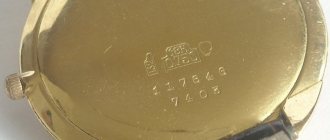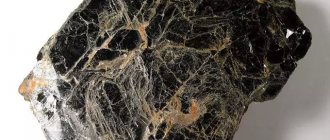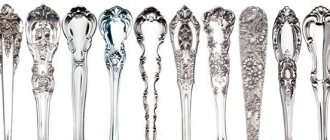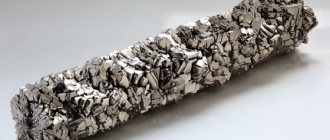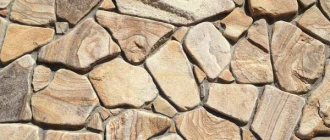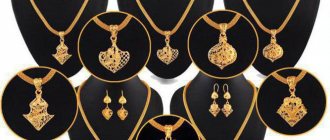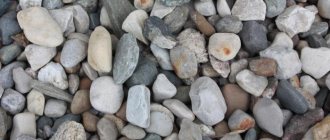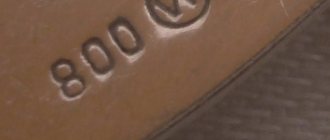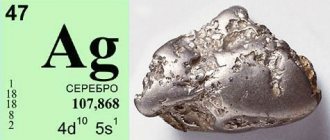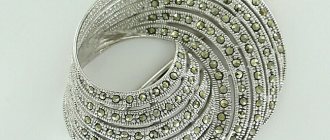Perhaps the most interesting, based on the variety of qualities, brands, characteristics and applications, is a brass alloy. And, despite the fact that its price is lower than, say, copper, it is used even in the manufacture of jewelry. The composition of brass is simple, but different proportions give such diverse qualities that it needs to be discussed in detail.
Composition and classification of brasses
The classic composition assumes the presence of copper and zinc in the alloy in a ratio of 2:1, respectively. The Ancient Romans knew such brass. Skeptics will remember that zinc in its pure form was discovered in the 16th century. But in the case of Ancient Rome, we are talking about zinc-containing rock, which at that time was already being processed.
At that time, it was believed that it was the presence of zinc that determined the color, and only later did it become known that the sunny shade of the brass alloy is obtained due to the fact that the presence of zinc dilutes the copper redness.
- Brass is divided into two-component (simple) and multi-component (special).
One of the markings for products made from brass indicates the percentage of components. So the letter L indicates the type of alloy - brass. and the adjacent numerical index indicates the copper content in the composition. For example, “L80” stands for “brass consisting of 80% copper and 20% zinc.”
Two components are not a mandatory requirement. If there are more of them, then each component introduced into the brass composition is displayed in the marking using the corresponding letter symbol following the letter L. Tin, nickel or lead can be used as additives. At the same time, brass changes its properties.
Additives are introduced into the alloy to achieve certain purposes. For example, brass in classical proportions cannot be used in shipbuilding. All thanks to the instability of brass to the effects of saline solutions (sea water). Additives introduced into the alloy solve this problem while maintaining the basic characteristics.
- According to the degree of processing, alloys are divided into: wrought (brass strip, wire, pipe, brass sheet) and cast (fittings, bearings, instrument parts).
Wrought two-component brass
Deformable multi-component brasses
Foundry brasses
This is interesting: Tompak: composition and characteristics of the alloy
Brass composition
In the brass formula, two components will always remain unchanged - copper and zinc. Copper is a natural resource, zinc is mined by recycling waste. In the finished material, the mass of zinc is kept in the range from 5 to 50%.
Copper is number 29 on the periodic table, has high ductility, and has a beautiful yellowish-golden color. When exposed to open air, an oxide film appears on the metal, causing the copper to turn red.
Zinc, number 30 on the periodic table, is a brittle metal and has a light blue color; when an oxide film appears, it darkens.
Copper-zinc alloy is divided into single-phase and two-phase:
- The single-phase alloy contains about 30% zinc. This is a common composition, which is characterized by plasticity and at the same time hardness. If the percentage of zinc increases, the ductility decreases while the hardness of the brass increases. After zinc reaches the 40% mark, the hardness indicator immediately drops. Single-phase brass is a ductile alloy and can be processed both at low and high temperatures, however, at a temperature of 400C a brittle zone appears.
- The two-phase alloy consists of 30−50% zinc and contains impurities of other metals within 10%. This is a technical or special alloy. It does not differ in plasticity; only when heated above 700C does it acquire plastic properties.
How do alloying additives affect
Alloying is an additive to an alloy that changes its composition and, as a result, gives it some new properties, or increases or decreases existing properties.
To reduce the loss of metal from the surface of the melt, aluminum is added to it; the resulting oxide film plays a protective role. To increase strength and improve anti-corrosion properties, magnesium is added to the alloy, separately or together with aluminum and iron. Moreover, additives have practically no effect on the density of the metal. The addition of nickel to the melt eliminates the manifestation of negative aspects in terms of oxidative processes. It is possible to improve the ductility, malleability of the alloy and the conditions for its cutting by introducing an additive such as lead into the brass composition. Silicon in combination with lead improves sliding to such an extent that an alloy alloyed with this additive can be used on equal terms with tin bronze. At the same time, silicon added without other additives specifically increases the hardness and strength of brass. If the metal is planned to be used on a ship, tin is added to it, which makes it resistant to salt water.
Properties
Brass inherited a significant specific gravity from copper; depending on the content of the main component in brass, its density ranges from 8.3 to 8.7 tons per cubic meter. In general, many of the physical properties of brass as an alloy depend on the ratio of its components, not only the main ones, but also those added in small quantities - alloying ones.
Perhaps a more or less stable characteristic is the specific heat capacity, its indicator at room temperature is 380 J/(kg*K), which means that to heat a metal weighing one kilogram by one degree Kelvin, 380 Joules of heat will be required. Specific electrical resistance varies from 0.025 to 0.108 Ohm*sq. Mmm. The melting point of brass also varies widely, from 870 to 990 degrees Celsius. Copper is a more refractory metal than zinc, so lower values apply to alloys with a higher zinc content.
Brass lends itself well to resistance welding, but is not fusion welded and is easy to roll. To protect the metal from oxidation in air, its surface is varnished, preventing blackening, although brass is more resistant to atmospheric influences than copper. Brass has a golden color and can be polished well. Additions of bismuth and lead to the alloy reduce its crushability when heated, but improve the behavior of the alloy when processed with a cutting tool.
The zinc content in an alloy determines such important properties as strength and ductility - these two seemingly mutually exclusive concepts. If zinc is added up to thirty percent, then along with this the strength and ductility characteristics increase. After this threshold, ductility begins to decrease, and strength continues to increase until the 45% mark, then decreases, as does ductility.
Many brands of brass lend themselves well to pressure treatment both at low temperatures and in a heated state, with the exception of temperatures from 300 to 700 degrees, which is a brittle zone and in this temperature range the alloy is not deformed. Improving the mechanical and chemical characteristics of brasses; they additionally include alloying additives.
Physicochemical characteristics
Brass has a yellow-golden hue, due to which the material is often used in the manufacture of artistic jewelry. The material is characterized by high ductility, corrosion resistance and anti-friction characteristics. Physical properties allow for polishing, forging, gas and arc welding, and plastic deformation of metal.
The melting point depends on the percentage of zinc content: as it increases, the melting point decreases. On average it is 880-940 degrees Celsius. In the open air, the surface of brass oxidizes and darkens, so it is often treated with a special protective varnish.
Products made of brass differ in their chemical properties from objects made of other metals. Resistance to oxidation and corrosion is much higher than that of copper, but the latter has better electrical and thermal conductivity. Brass alloys are easier to process, but they are inferior in strength to, for example, bronze products.
Properties and characteristics
The properties of brass are determined by its composition, both chemical and phase. Therefore, it is quite difficult to talk about general technical properties. Each alloy has its own characteristics.
The average data looks like this:
- average density – 8300–8700 kg/cubic. m;
- specific heat capacity at normal temperature - 0.377 kJ kg−1 K−1 resistivity - (0.07-0.08) 10−6 Ohm m;
- thermal conductivity – 0.26–0.592 cal/cm sec, °C, the higher the proportion of copper, the higher the thermal conductivity;
- The melting point is determined by the chemical composition and varies from 880–950 C. An increase in the proportion of zinc reduces the temperature;
- the material can be welded, but not by fusion welding, but, for example, by contact welding.
- Alloys of any composition are well polished.
The introduction of alloying additives significantly affects the physical characteristics. The data given relate specifically to two-component brasses.
We will talk about the production of parts from brass and copper in bulk and to order, as well as the production of other products from it below.
Melting brass in an induction furnace without a graphite crucible is presented in the video below:
Effect of impurities on properties
Impurities are not the main alloying elements of simple brasses, but they affect the properties of the alloys. It is almost impossible to obtain an alloy without impurity atoms, since foreign elements are contained in the raw materials for the production of copper and zinc. Ultrapure metals have a high cost and their use is highly specialized and not justified for mass production. The amount of impurities is controlled by standards, which guarantees the mechanical and technological properties of grade copper alloys.
Low-melting impurities, which have limited dissolution in copper-zinc alloys, negatively affect the properties of brass. Low-melting inclusions in the brass composition are released along the grain boundaries and worsen the plastic properties during hot deformation. Single-phase α-brasses are most sensitive to such impurities.
Impurities that do not form independent phases do not negatively affect the mechanical and technological properties of brass.
- Aluminum is completely in solid solution and, as an impurity, does not deteriorate the properties of brass. Small additions of aluminum during melting form a protective film of aluminum oxide on the surface of the melt. This prevents the evaporation and loss of zinc.
- Nickel and manganese in low concentrations enter the solid solution and have little effect on the physical, mechanical and technological properties of brass. Nickel raises the recrystallization temperature of brasses.
- Iron at room temperature has low solubility in the copper-zinc solid solution and forms an independent γFe phase in brasses. This ferromagnetic phase significantly changes the magnetic properties of brasses. The iron concentration in antimagnetic brass does not exceed 0.03%. Iron improves the strength and technological qualities of alloys, since it makes recrystallization difficult and refines the grain.
- Silicon is an impurity that enters a solid solution. Silicon improves soldering and welding of brass and increases resistance to corrosion cracking.
- Bismuth requires special control; it does not dissolve in brass alloys in the solid state and creates a low-melting eutectic at the grain boundaries, which consists of pure bismuth. Bismuth provokes the hot brittleness of brasses, having a stronger effect on single-phase ones. Its concentration in brasses is limited to 0.002–0.003%
- Lead is slightly soluble in copper-zinc alloys in the solid state and, upon solidification, is released in elemental form at the grain boundaries in the form of small spherical particles. Lead impurities impair the ductility of α-brasses at elevated temperatures. Lead provokes hot brittleness, especially in single-phase brasses, so the lead content in double α-alloys does not exceed 0.03%. Additions of lead to brass improve machinability.
- Antimony is a harmful impurity in copper-zinc alloys. It impairs technological ductility during hot and cold forming. Antimony concentrations of up to 0.1% in two-phase brasses prevent dezincification.
- Arsenic dissolves in solid copper up to 5% by weight at a temperature of 25°C, but in a copper-zinc solid solution its solubility is no more than 0.1%. The brittle intermediate phase As2Zn is formed at an arsenic concentration of more than 0.5%. This phase is released in the form of interlayers at the grain boundaries, which leads to brittleness of brass. Arsenic in small quantities of 0.025-0.06% with microadditives protects brass from corrosion cracking and dezincification in sea water.
- Phosphorus is slightly soluble in copper-zinc alloys during solidification. In a solid solution, phosphorus forms an intermediate phase, which increases the hardness and greatly reduces the plastic properties of brass. Small amounts of phosphorus increase the mechanical properties of brasses and reduce the grain diameter of castings. The rate of grain growth in deformed brasses is increased by phosphorus during recrystallization annealing. Copper-zinc alloys do not require deoxidation with phosphorus, since zinc is a stronger deoxidizer than phosphorus. In industrial grades of brass, the phosphorus content does not exceed 0.005-0.01%
Let's analyze the chemical properties of brass and the influence of all its components.
The designation of all varieties of brass according to GOST is the capital L. For a 2-component alloy, it is followed by the percentage of copper, and the remainder is zinc. An example is L63. For multi-component brass, the first letters of alloying elements are added to L, and their percentage in the composition is added to the number separated by a dash (LS59-1). The amount of zinc is calculated by subtracting the sum of these numbers from 100.
Zinc improves the mechanical properties of brass, increasing its ductility and strength. Its maximum ductility is achieved at 30 percent zinc content. If Zn is more than 39%, the ductility deteriorates, and the strength of the alloy, on the contrary, increases sharply.
Arsenic prevents dezincification of brass when it is in aggressive fresh water at room or elevated temperatures.
Lead enhances the antifriction properties of brass and promotes better machinability of workpieces by cutting. This element acts as a lubricant and reduces wear on cutting tools. The chips become brittle, brittle and do not stick to the cutters or cutters. The surface of the parts is smooth, with the required roughness parameters.
Iron reduces the grain size of brass, increases the hardness of the alloy and increases its recrystallization temperature.
Tin, aluminum and nickel make brass more resistant to corrosion in seawater and air while increasing its strength.
Brass is a copper-zinc alloy. Its components in the presence of an electrolyte solution (water, etc.) form a galvanic couple. Moreover, the more active metal, zinc, is destroyed. The brass dezincification process starts. This is corrosive destruction, accompanied by darkening of the surface of the material and the release of white zinc oxides on it.
Because of this, the use of brass fasteners with mating elements made of steel, bronze or aluminum alloys is not allowed. Those. brass parts can only be connected to each other or using chemically inert plastics (polyamide, etc.). In addition, brass must be stored in warehouses at positive temperatures without significant changes. High air humidity and condensation are not allowed.
| Conformity table of domestic and foreign brands of brass | |||
| ASTM | DIN | GOST | |
| C21000 | CuZn5 | 2.0220 | L96 |
| C22000 | CuZn10 | 2.0230 | L90 |
| C23000 | CuZn15 | 2.0240 | L85 |
| C24000 | CuZn20 | 2.0250 | L80 |
| C26000 | CuZn30 | 2.0265 | L70 |
| C26200 | CuZn33 | 2.0280 | L68 |
| C26800 | CuZn37 | 2.0323 | L63 |
| C27200 | |||
| CuZn40 | L60 | ||
| C35000 | CuZn38Pb5 | 2.0371 | LS59-1 |
| C37100 | |||
| C35600 | CuZn36Pb3 | 2.0375 | LS63-3 |
| C36000 | |||
| C68700 | CuZn20A12 | 2.0460 | LAMsh 77-2-0.05 |
| C37700 | CuZn39Pb2 | 2.0380 | LS59-2 |
| C38500 | CuZn39Pb3 | 2.0401 | LS59-3 |
| C37800 | CuZn30Pb2 | 2.0402 | LS58-2 |
| CuZn20Al2 | LA77-2 | ||
| CuZn38AlIMn2Al1 | LAZ60-1-1 | ||
| CuZn40Mn1 | LMts58-2 | ||
| CuZn40Al1Mn | LMtsA57-3-1 | ||
| CuZn28Sn1 | LO701 | ||
| CuZn38Sn1 | LO62-1 | ||
| CuZn35Pb2 | LS63-2 | ||
| CuZn38Pb2 | LS60-2 | ||
The density of brass, as one of its physical properties, differs little from copper. If the permissible amount of silicon in the alloy is exceeded, the brass will have less density and strength.
Additives to the alloy of manganese, tin and aluminum contribute to an increase in the tensile strength of brass parts. To increase the elongation factor, alloying with iron is necessary.
Due to the significant copper content and the presence of zinc, the electrical properties of brass are excellent. Electrodes for erosion machines are made from it.
The melting points of brass are in the range of 855 – 965 for lead alloys and 885 – 1070 °C for two-component alloys. This value decreases with increasing zinc content.
| Technical comparison of Copper and brass grades L63 and LS59-1 | |||
| Fur. show | Copper | L63 | LS59-1 |
| Electrical resistivity | 0,018 | 0,065 | 0,065 |
| Thermal conductivity | 0,925 | 0,25 | 0,25 |
| Impact strength | 17.0 | 14.0 | 5.0 |
| Tensile strength, shear in MPA | 210 | 240 | 260 |
| Machinability | 18% | 40% | 80% |
Brasses subjected to processing by plastic deformation (rolling, bending, pressing, forging, embossing) are single-phase (L63, up to 30% zinc) or two-phase (40 - 45% Zn). The last category (for example, LS59-1) is excellently processed only in a hot state, and 1-phase - in a cold or heated state. In order to relieve residual stresses inside the part and increase its hardness and strength, products after stamping and similar processing are subjected to heat treatment (hardening) at a temperature of 240 - 260 oC.
Brass is similar in color to bronze. But the latter is attracted to a magnet, while brass is practically not. In addition, brass has a high density and, accordingly, a workpiece made from it with the same configuration is heavier than bronze. When brass parts are heated to 600 - 650 °C (dark red tint), ashen zinc oxide appears on their surface, which bronze does not have. Brass is more ductile at the expense of wear resistance and strength, which are higher in bronze. And bronze resists corrosion better when in contact with salty sea water. Under these conditions, only tin brass of the LO brand is comparable to it. The brass at the fracture site is light with a fine-grained structure, bronze is painted dark brown and has large grains.
The advantages of brass parts are:
- Resistance to corrosion destruction, which manifests itself when products are exposed to air, sea water, most organic and carbon dioxide. Brass is more resistant to oxidation processes than stainless steel.
- Pliability under pressure is characteristic of alloys that do not contain lead. This facilitates their forging and stamping (with or without heating).
- Low thermal conductivity, so when the temperature drops, the properties of the products do not change.
- There is no residual magnetization at the end of exposure to current or electromagnetic field. Therefore, such parts (for example, made from L63A material) do not create interference and are used in devices with increased sensitivity to interference.
Brasses are resistant in the following environments (at normal temperatures):
- air, incl. nautical
- dry steam at low speeds (oxygen, carbon dioxide and ammonia accelerate corrosion)
- fresh water (ammonia, hydrogen sulfide, chlorides, acids accelerate corrosion)
- in sea water at low water speeds
- dry halogen gases
- antifreezes, alcohols, freons
Relatively stable:
- alkali without stirring
Brasses are unstable in the following environments:
- wet saturated steam at high speeds
- mine waters
- oxidizing solutions, chlorides
- mineral acids
- hydrogen sulfide
- fatty acid
The main areas of application of brass products are the chemical, aviation and shipbuilding industries, refrigeration engineering, electrical engineering and energy (contacts, busbars, power transformers), production of high-precision electronic devices and sensors. Brass is used in everyday life for decorating the interior of premises, installing plumbing fixtures and making furniture, assembling acoustic musical instruments, wooden structures in construction, for making information and advertising signs, and souvenirs.
The main brands of brass that are widely used are:
- Two-component (L63, L68, L70, etc.).
- Multicomponent - aluminum (LA77-2, LA 85-0.5, etc.), silicon (LK80-3), manganese (LMts58-2), tin (LOK59-1-0.3, LO60-1), nickel (LN65-5) and lead (LS59-1, LS63-3).
The brass used for the production of fasteners includes the LS59-1 grade. This multicomponent alloy contains up to 60% copper; 42.2% zinc; 1.9% lead and 0.75% impurities. The melting point is 885...895 oC. This type of brass can be easily processed by pressure, but it is mainly used for making parts by cutting. Lead will facilitate drilling, milling and turning of workpieces.
The range of products made from LS59-1 includes:
- Rods of various sections, wire and rolled profiles.
- Strip, plate, sheet and round pipe.
The delivery state of the blanks is soft, semi-hard and hard.
This brass has excellent wear resistance. Therefore, guides for machine tools and sleeves for sliding bearings are made from it. But due to its increased fragility, such material is not resistant to impacts and cannot be used for load-bearing elements.
For the manufacture of decorative furniture fittings, rivets and other fasteners, two-component brass L63 (Cu – 65%, Zn – 38%) with a melting point of up to 910 °C is used.
It is used to produce sheet metal, wire, round pipes and various rods. Thanks to the single-phase structure of the crystal lattice, this alloy is more ductile than other brasses and is excellently deformable using all known technologies (drawing, drawing, stamping, etc.). To maintain decent corrosion resistance, L63 parts produced by cutting are pre-annealed. Such brass products do not oxidize in the environment of liquid and gaseous refrigerants, other halogen-containing substances, aqueous solutions of antifreeze and alcohol, and dry water vapor.
Brass production, types and properties
Brass is produced at high temperatures in special clay containers.
When making the alloy, it is necessary to take into account that part of the zinc evaporates. The alloy is divided into several types:
- Tompak is an alloy containing no more than 13% zinc. Tompak is characterized by increased elasticity, high resistance to rust and abrasion. This type of brass is used when welded with stainless steel to obtain a valuable alloy, from which medals, fittings, costume jewelry, art items and tools are subsequently made.
- Semi-tompak is an alloy in which zinc varies between 10-20%. The scope of application of semi-tompak is similar to tombac, but it is a less valuable alloy.
- Cast brass is an alloy containing 50-80% copper, as well as admixtures of other metals. Due to its flowing properties, it is used in the manufacture of semi-finished products and shaped products by casting. It has low rates of material degradation, is resistant to friction and rust and also has excellent mechanical properties. Cast brass is used in the production of bushings, fittings, nuts, bearings and other rust-resistant fittings.
- Automatic brass is an alloy containing lead in a percentage not exceeding 0.8%. Lead allows you to increase the processing speed of products due to the formation of short chips. It is produced in the form of sheets, strips and rods; later they are used to turn watch mechanism parts, hardware and nuts.
Quite often, brass is confused with bronze, and many even believe that they are the same material - this is completely wrong. You can distinguish these two metals at home; to do this, you need to go through the following algorithm of actions:
- It is good to clean both materials and examine them in sunlight. The color of bronze will fade to red, and brass to yellow, sometimes even white.
- By placing the product in a container of water, you can analyze it for density. The molar mass of brass is in the range of 8350−8750 kg/m3; if the mass is higher, then it is bronze.
This is interesting: How to distinguish bronze from brass: composition, characteristics, features
Application of brass
This copper-zinc material is malleable and tough; thanks to these qualities, it is actively used in forging, mechanical engineering and other fields. Under the blows of an anvil or hammer, brass takes any shape. Depending on the scope of application of brass, the composition of the alloy as a percentage varies in accordance with the following markings:
- L80, L85, L90, L96 - instrument elements, chemical and thermal mechanisms, coils, etc.
- L68 - stamped parts.
- L70 - quill for the chemical industry.
- L60 - thick-walled fittings, machine springs and nuts.
- L63 - elements for the automotive industry, condenser tubes.
- LAZH60−1−1 - spare parts for sea vessels.
- LA77−2 - capacitor devices for sea vessels.
- LAN59−3−2 - elements of chemical equipment, sea vessels and electrical machines.
- LN65−5 - condenser and manometric pipes.
- LZhMa59−1−1 - spare parts for aircraft and marine vessels, bearing shells.
- LMts58−2 - hardware, nuts, fittings.
- LO90−1, LO62−1, LO70−1, LO06−1 - condenser pipes for heating equipment.
- LMtsA57−1−1 - elements and spare parts for river and sea vessels.
- LS74−3, LS63−3 - bushings and clock mechanisms.
- LK80−3 - corrosion-resistant products.
- LANKMts75−2−2.5−0.5−0.5 - springs and pressure tubes.
- LMsh68−0.05 - capacitor collectors.
Brass remains the most sought after and popular alloy, whatever its composition. If the production technology is followed, it will not rust, blacken or oxidize.
Additives in alloys
Alloying elements are used in brasses. These are substances introduced into the alloy in order to change the structure, and as a result, the characteristics. These elements include:
- Aluminum. The presence of aluminum in the alloy reduces the volatility index. As a result of interaction with oxygen, a layer of aluminum oxide is formed on the surface of the product, which eliminates the volatility of the material.
- Magnesium. This additive is most often introduced in combination with iron and aluminum. Thus, the structure changes, and the alloy becomes stronger, wear-resistant, and corrosion-resistant.
- Nickel. This type of additive is introduced to neutralize the effects of oxidative processes.
- Lead. The presence of this alloying element provides plasticity to the material. It becomes more malleable, easier to mechanically influence, including cutting. Used for products that do not have a load-bearing function during operation.
- Silicon. The additive is introduced to increase the strength of the metal and its rigidity. If lead is added in parallel, the anti-friction properties will improve. Again, alloys of copper, zinc, silicon with lead and bronze with tin are becoming competing. The cost of the latter is higher.
- Tin. This metal is added to eliminate the risk of corrosion pockets. This is especially important in shipbuilding. With the addition of tin, salt water is not harmful to the metal.
Chemical composition and features of the internal structure
The main constituent elements are considered to be zinc and copper, the concentration of which will be the highest. The composition of brass may also include other impurities that give the alloy special physical properties. The main component of brass is characterized by high ductility and good machinability. Therefore, these properties are transferred to the metal in question.
The chemical composition of brass is regulated at the time of production, as is the type of structure. There are two types of structure:
- Alpha phase is a solution that has increased stability. Considering the crystal lattice, it should be noted that it has a face-centered cubic shape. This type of structure occurs extremely often.
- The alpha + beta phase is another stable solution, which can be characterized by a ratio of copper to zinc of 3 to 2. Due to this, a unit cell is obtained.
It is worth considering that the hardness of the second alloy is much higher than the first. However, due to a significant increase in hardness, ductility decreases significantly. The maximum zinc content in brass is 50%. If the production technology is followed, such a concentration of zinc allows one to achieve high levels of strength and ductility.
When producing this material, we take into account how the heating temperature affects the ongoing structural transformations:
- If the alloy is heated to high temperatures, then the atoms of the β-phase begin to be arranged in no particular order. In this state, the composition has increased plasticity.
- If heating is carried out to a temperature of 460 degrees Celsius, then a phase is formed in the composition, which is called β'. A feature of this phase is increased hardness and brittleness. These qualities are due to the fact that the atoms are arranged in a strict order.
Complex brasses may contain iron, manganese, lead and other components that are designed to change physical properties. For example, lead makes the alloy easier to machine.
The inclusion of lead and bismuth in the composition causes a decrease in the ability of the alloy to deform in a hot state. However, lead in a small concentration makes it possible to obtain loose chips, which makes it easier to remove them from the cutting zone during turning or milling.
Metal production
Since the main component of brass is copper, the material is classified as a copper alloy. The production scheme is quite simple. However, from a technological point of view, the process turns out to be complex, since it requires very strict adherence to temperature conditions and processing of raw materials and workpieces.
In general, the production of the alloy looks like this:
- melting copper in special crucibles;
- introduction of zinc;
- introduction of additional components - iron, nickel;
- pouring into molds;
- hardening - by stamping or drawing.
The matter is further complicated by the fact that the conditions for obtaining alloys largely depend on the composition of the alloy and its purpose.
Below is a video about melting brass at home.
The video below explains how to produce and melt brass at home:
Technologies
The production of brass should begin with the extraction of copper from copper ore. In fact, this is a complex polymetallic raw material, in which the proportion of copper is small. The main components are waste ore, iron and copper, and the first step in obtaining brass is to separate the copper from the other components.
Receiving raw materials
The process is extremely complex, since its goal is to transfer raw materials from a single multicomponent mixture into a heterogeneous system consisting of several phases with different compositions and different properties. Only after this the phases can be separated from each other and compositions suitable for further use can be obtained. A variety of methods are used for this: in some cases, the extracted phase is additionally enriched with the “main” metal, in others, on the contrary, it is depleted, in others they resort to mechanical separation methods when the phases, for example, differ in solubility, and so on.
The following two methods are most often used.
- Pyrometallurgical technology involves processing copper ore with subsequent refining of blister copper. It includes smelting, converting copper matte, fire refining - essentially removing large impurities, and electrolytic refining. The latter allows not only deep purification of copper, but also the extraction of any associated components if they are of value.
- The hydrometallurgical method is used when using low-grade copper ore. Its essence comes down to leaching - the effect of sulfuric acid, iron sulfate. To do this, the ore is crushed and dissolved in solvents, and then the copper is extracted either by cementation - the deposition of pure copper on iron, for which ordinary scraps of sheet and wire are used, or by electrolysis.
In this way, it is possible to completely extract copper from even the poorest ore.
Obtaining zinc also has its own characteristics, but, in general, is a simpler process.
We will tell you below whether it is possible to weld brass at home and how it is produced at a factory.
Alloy production method
Smelting of brass depends on the composition of the alloy. Here it is necessary to take into account both the different boiling temperatures of metals and different oxidation abilities.
- Melting with pure metal - when using recycled metals, the charge can be loaded in any order. If there is pure metal in the charge, then copper is melted first, and then the circulating metals. Zinc and lead, if any, are introduced into the melt last, pre-heated to 100–120 C. Melting is carried out under a layer of charcoal, which is loaded with the first portion of the charge.
- Melting silicon brass - this composition tends to absorb reducing gases, so charcoal is not used here. Melting is carried out under a covering flux - glass or borax - to prevent interaction with oxygen. Copper is loaded into the furnace first, then waste and copper-silicon master alloy. Zinc is loaded into the melt last, after the slag has been removed.
- Melting of manganese brass is carried out under charcoal or glass flux. In this case, manganese is introduced last along with alloys, after all other ingredients are melted.
Marking order
To mark the alloy in question, certain rules were adopted to indicate the concentration of the main substances. All brands of brass begin with the designation “L”, which may be followed by the letters of the chemical substances included in the composition.
A wrought brass alloy or another variety of it has a number after the first letter characterizing the percentage of copper. In addition, the marking may indicate the concentration of alloying elements, for which the “L” sign comes with other letter designations.
To indicate the concentration of alloying elements, a dash is placed after the main number, then the percentage of the following elements is indicated. A dash is also used to separate digital symbols. The concentration of the second main element (zinc) is calculated by subtracting other indicators of the concentration of copper and alloying elements from 100% of the value. An example of how brass is designated according to established standards is the marking LAZH70-1-2. It should be read as follows:
- The alloy contains 70% copper.
- The alloying elements are aluminum and iron, the concentration of which is 1% and 2%, respectively.
- Zinc concentration: 100 – 70 – 1 – 2 = 27%.
In some cases, the concentration of zinc is indicated by the corresponding letter, and the amount of copper is calculated. A similar marking method is more often used to mark foundry brass.
Types of brass
Brass can be simple or special:
- Simple - it contains only two components, copper and zinc. Marked with the letter “L” and numbers. The numbers in the marking indicate the percentage of copper to the total mass of the alloy. Based on this, it is clear that the alloy marked “L68” contains 68% copper and 32% zinc.
- Special - consists not only of copper and zinc, but other metals are added to it, which change the properties of the alloy depending on their characteristics. The marking of this material carries information about the percentage of copper to zinc and other elements called alloying elements. For example, the marking “LA70−3” indicates that the composition used 70% copper, 3% aluminum and 27% zinc. In special brass, additional metals can be:
- Tin.
- Lead.
- Iron.
- Manganese.
- Nickel.
- Silicon.
- Aluminum.
Brass manufacturing technology
To obtain a brass alloy, you need to follow a number of steps:
- Place the copper raw material in a clay bowl, after weighing it.
- Place the bowl in a special oven.
- Lump zinc and the necessary additives are added to the molten copper.
- The resulting alloy is melted until the composition is homogeneous.
Liquid hot brass is poured into molds. Furnaces for the production of alloys usually operate on solid fuel - coal.
A problem with melted brass alloys is zinc evaporation. Therefore, smelting plants are equipped with absorbent systems to capture it, after which it is reintroduced into the brass alloy. The next feature of the alloy manufacturing technology is the need for re-melting. During primary brass shrinks, and deflections form in the products.
The temperature required for melting brass cannot be lower than +800
0
C. The exact indicator is calculated for each brand of brass separately. The amount of zinc in alloys is inversely related to the melting point of brass. That's all the technology is.
Marking
When marking metal, certain rules are adhered to, set out in state standards - GOST. The alloy is designated by the initial letter - L, followed by the initial letters of the alloy additives with numbers indicating the amount of additive. Marked deformable brass after the first letter includes numbers - how much copper is in the composition: L 70.
If the deformable brass is also alloyed, the initial letter of the additives and the percentage number are included in the designation: LAN 60-1-1, this is 60% copper, 1% aluminum and 1% nickel. The zinc content in such an alloy is calculated by the difference, in this case 100 – (60+1+1) = 38%. Brasses for casting are marked differently: the quantitative values of the alloy components are entered immediately after their first letters. Thus, in the product LC 40 Mts 1 zinc is 40%, manganese is 1%.
Differences between the most popular brass alloys
Let us reveal the features of the most famous and sought-after alloys:
- L63 (copper 62-65%, zinc 35-38%). One of the most common types of brass, it can be polished, drawn, rolled, embossed, and bent. Used for the production of refrigeration equipment, rivets and household decor.
- LS59-1 (copper 57-60%, zinc 37-42%, lead 1%). Processed by pressure and cutting on lathes and milling machines. Lead alloying provides additional resistance to cracking. Used for the manufacture of fastening fittings, gears, bushings, gears, bearings, pipes and rods.
- L90 (copper 88-91%, zinc 9-12%). Also called tombac, it has a golden color. Can be enameled, forged, embossed. It has increased ductility, does not rust and tolerates welding with steel well, designed for the production of semi-finished products and wire for electrical engineering.
- L68 (copper 67-70%, zinc 30-33%). It is subject to pressure and has good ability to be cold deformed, soldered and welded. Not only fasteners and rolled products are made from this material, but even equipment and ammunition.
Types of brass metal products
The main types of brass metal products are as follows:
- brass rods - long parts with a round, square, rectangular cross-section;
- brass plates - flat pieces 2.5 cm thick or more;
- brass wire for electrical engineering and other industries;
- brass pipe for carrying communication lines;
- brass circles for the manufacture of machine tools, instrument making, etc.;
- brass sheets for various industries, etc.
For each type of brass metal, a certain grade of metal with a strictly regulated chemical composition is required.
Physical properties
Physical properties largely depend on the chemical composition of a particular type of alloy. Therefore, the properties of brass may vary significantly.
As previously noted, tombak has become widespread, which can be used for the production of various parts and even jewelry.
The color of this type of brass can be yellow or red depending on the concentration of zinc. The main properties of such brass include the following points:
- High degree of plasticity. The plasticity of deformable brass allows it to be used as a workpiece in various production processes: it is suitable for processing by both stamping and turning.
- High corrosion resistance means that even with prolonged use at high humidity, rust does not appear on the surface.
- Good anti-friction properties.
- Weldability with steel and other materials allows the alloy to be used to produce combined materials.
- It is possible to coat the surface of the tombak with various compositions to impart special performance qualities. An example is that quite often tombac is coated with enamel or varnish to decorate it.
- Initially, the alloy has a beautiful golden color. For this reason, it is often used in the production of artistic products.
The mechanical properties of wrought brass can change significantly due to the addition of various alloying elements.
In mechanical engineering and other areas of production, the foundry variety of brass has become widespread. Its density is relatively low (about 8300 kg/m
3
), however, other physical properties determined the widespread use of cast brass:
- Resistance to corrosion.
- High mechanical characteristics.
- Good malleability.
- A high fluidity rate when the alloy is heated, which makes it possible to obtain products of complex configurations.
- Increased resistance to composition breakdown due to environmental influences.
- Melting of the composition takes place at a temperature of about 950 degrees Celsius.
Yellow brass
The strength of brass is lower than that of steel, which is due to the structural features of the crystal lattice and composition. The influence of zinc concentration on the properties of brass is very great. Therefore, to impart special properties, the concentration of the main elements can vary significantly.
Areas of use
The properties of materials also determine the scope of application. The composition of each alloy is indicated in detail in order to prevent errors during use.
- Brass has been used in jewelry since ancient times: yellow brass in appearance is no different from 583 gold. And, by the way, it was it that was used as training material for goldsmiths, since its physical characteristics are in many ways close to gold. Today, the alloy is used to make jewelry, which, although classified as costume jewelry, is very popular due to its beauty and elegance.
- The material is used in the production of furniture. It can be easily forged, which allows you to significantly decorate furniture. Thanks to this same property, many decorative items are made from it - figurines, dishes, stands, sconces.
- In addition, tombac, that is, a composition with a high copper content, is used to produce parts for thermal and chemical equipment: coils, capillary tubes, bellows and others.
- Cast brass is used to produce many shaped parts, including a variety of fittings.
- Automatic - material for the manufacture of watch parts, machine parts, as well as various types of fasteners.
- Marine is used in shipbuilding for the production of instrument bodies, profiles, and pipes.
- Wrought alloys are used in the manufacture of door fittings, water pipes, faucets, taps and other things.
Brasses of different compositions are used in many industries. Their use is mainly due to the good corrosion resistance of the material, low weight and, of course, the rare aesthetic appeal of the alloy.
This video will show you how to polish copper and brass to a shine:
Let's look at how alloying elements affect the properties of brass.
- Tin significantly increases the anti-corrosion properties in sea water and increases the strength of the alloy. Brass with tin is often called marine brass.
- Manganese increases strength and corrosion resistance. Manganese brasses are often combined with tin, iron and aluminum.
- Nickel improves corrosion properties and strength in various environments.
- Silicon reduces strength and hardness and also improves weldability. Brasses containing silicon and lead have good anti-friction properties. Such alloys can replace more expensive ones, such as tin bronze.
- Lead significantly improves machinability, but at the same time degrades mechanical properties. Lead brass is called automatic, since it is processed on automatic machines. This alloy is the most common.
- Aluminum reduces the volatility of zinc due to the formation of a protective film (aluminum oxide) on the surface of molten brass.
Production methods
A copper alloy such as brass lends itself well to various processing methods. Thus, various products can be produced from this alloy using forging, stamping and drawing methods, and due to its relatively low melting point and good fluidity in the molten state, it is actively used in foundries.
Pouring molten brass into molds
Brass, the main alloying element in which is zinc, is obtained by melting:
- in crucibles made of refractory material (for heating, crucibles together with alloy components are placed in shaft or flame furnaces);
- in reverberatory furnaces (when using this method, smelting is performed without the use of crucibles).
When smelting a brass alloy, one should take into account the fact that zinc will actively evaporate during this procedure, so the amount of this metal should be calculated with some margin.
» data-lazy-type=»iframe» src=»data:image/gif;base64,R0lGODlhAQABAIAAAAAAAP///yH5BAEAAAAALAAAAAABAAEAAAIBRAA7″>
